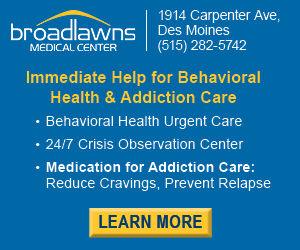On Leadership: 10 questions to help leaders thrive during change

SUZANNA de BACA Sep 28, 2021 | 1:36 pm
4 min read time
864 wordsBusiness Record Insider, On Leadership, OpinionWhether I’m in conversation with business leaders running organizations, friends trying to manage hybrid work, or parents dealing with ever-changing school situations, everyone keeps talking about “getting back to normal.” But what is normal now?
While it is human nature to desire stability, or at least a break from the chaos we’ve been experiencing through the prolonged pandemic, I’m struck by how common it is to want to return to a feeling of something familiar rather than to move toward something new or different. But we are likely to be living with rapid change as a way of life, especially at work.
“All indications are that increasing volatility, complexity, and rapid change is the new normal, which requires new ways to drive change within organizations — new ways that mobilize the employee base to actively participate in gathering insights, creating solutions, and providing leadership,” says a recent Harvard Business Review article titled “Is Your Organization Surviving Change — or Thriving in It?” This article asserts that it’s possible to reframe the concept of change from something to be feared and resisted to something positive and welcome.
Through the years, I’ve come to accept that change is not only inevitable, it is how we grow and develop. But that doesn’t mean it is always easy — far from it. So how do you actually change your mind about change when so much is unknown and things are moving fast?
Here are 10 questions to ask during periods of change or uncertainty and ideas to help you move from resistance to acceptance to thriving:
- Are you waiting until you have all the answers? Even in stable times, no one has all the answers. Leaders who thrive are those who accept they will never have all the information they need but make educated decisions and move forward anyway.
- Are you resisting change because you don’t know what direction to take? Savvy leaders don’t always know which way to steer but lean on data and input, especially when uncertainty hits. Turn to the tools you do have – research, trends, surveys or interviews with staff and customers. Patterns and answers will begin to emerge, leading you to a more informed course.
- What if you don’t know all the unknowns? Disaster and contingency planning are effective because they require leaders and teams to think through what might happen and create response plans and processes; leaders can proactively employ this type of scenario planning any time. Considering multiple scenarios helps take the emotion out of the situation when something does occur and allows teams to act swiftly.
- What can you control when everything seems out of control? Strive to control yourself. You can choose your attitude, behavior, self-care regimen and how you show up for your teams. Being in control of yourself will not only help you stay positive and calm, but also help your team see that change is, in fact, an opportunity for growth.
- How can you get comfortable with uncertainty? You’ve inevitably come through uncertainty at some point in your life. No matter how great or small your past obstacles, remind yourself you’ve successfully navigated change before and consider the positive outcomes that happened when you were afraid or resistant.
- What if you fail? All leaders make mistakes; it is part of taking risks, a necessary element of leadership. Failure is relative, and it is part of learning and growing. Great leaders fail fast, learn from the experience, make course corrections and do not let setbacks prevent them from starting again.
- Where do you start when the changes seem so vast? When looming change is overwhelming, break it down. Start small and iterate with a desired outcome in mind. Chances are you’ll have to adjust during the process anyway, so be flexible and fluid, building expectations of adaptation into the process.
- What if the future is worse? There is a big difference between something being uncertain and something being bad, yet it’s easy to equate the unknown with the negative. Catch yourself when you fall into this mental trap and ask yourself why you are making that assumption. Recall when unexpected events yielded positive outcomes, and gradually shift your thinking: What if the future is better?
- What if your organization has not done it this way before? One of the most dangerous phrases is: “We’ve always done it this way.” While respecting and learning from the past is helpful, today’s game is being played on an entirely new field, so allow yourself to break away from tradition or process that does not serve you and your organization anymore.
- What does it mean to thrive during change? You may be thinking one must achieve enormous success, awards or dramatic results to be thriving. But changing one habit, one process, or hitting one milestone are steps in a larger journey, and those are successes in their own right. Define and then recognize individual victories and celebrate them as often as possible. When change yields even the smallest results, it starts to feel positive and even enjoyable; that is thriving. And that is where the magic of transformation can truly happen and, as Eckhart Toll says, new opportunities emerge.










